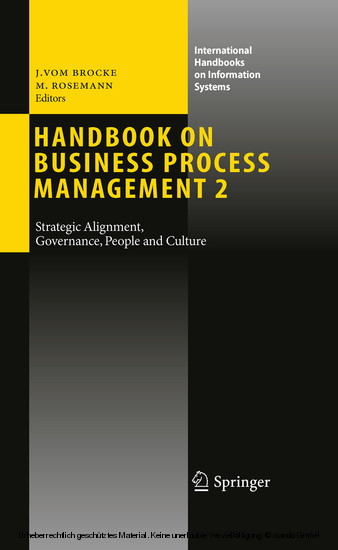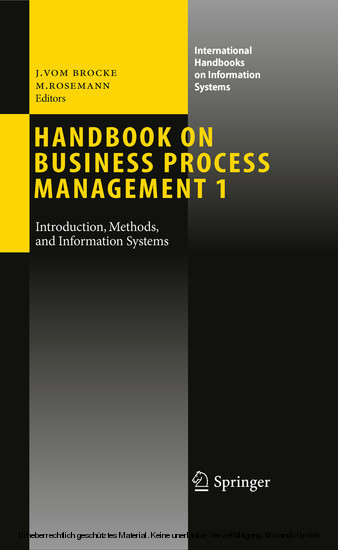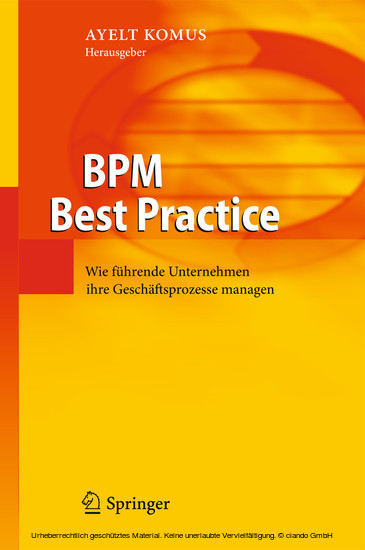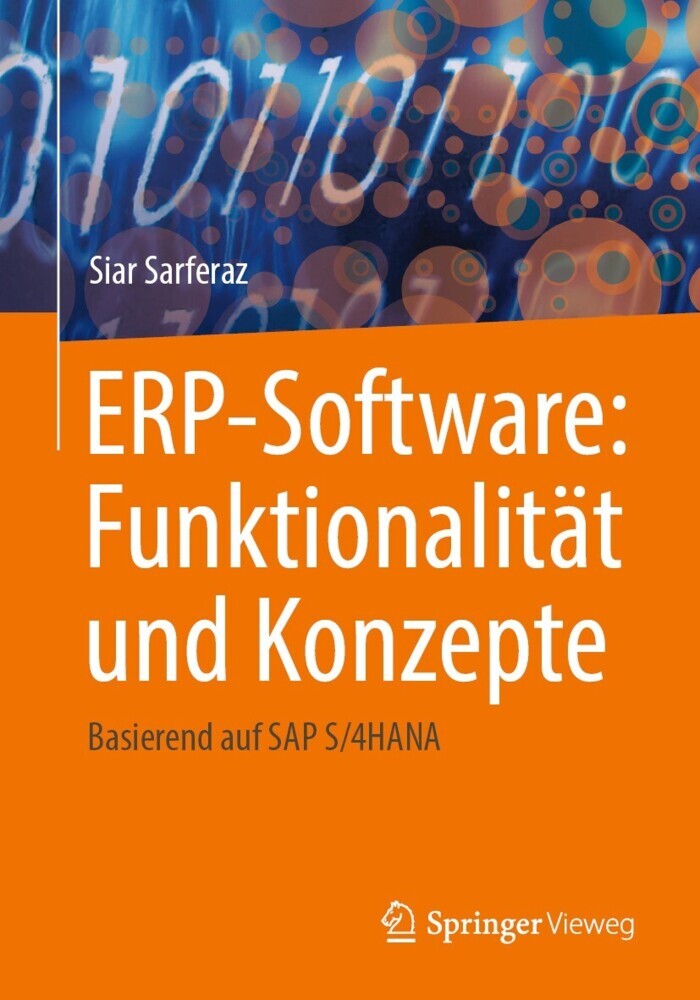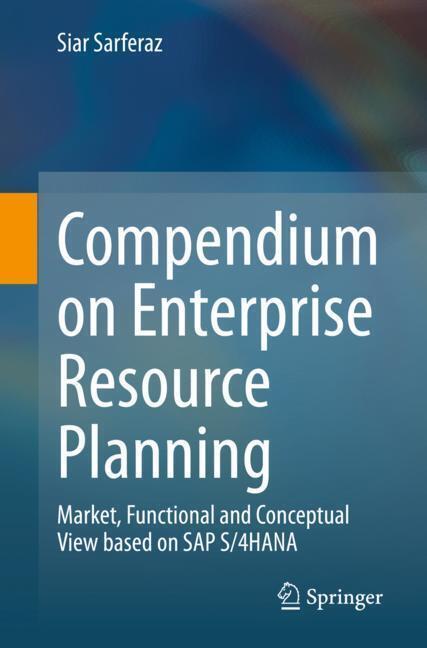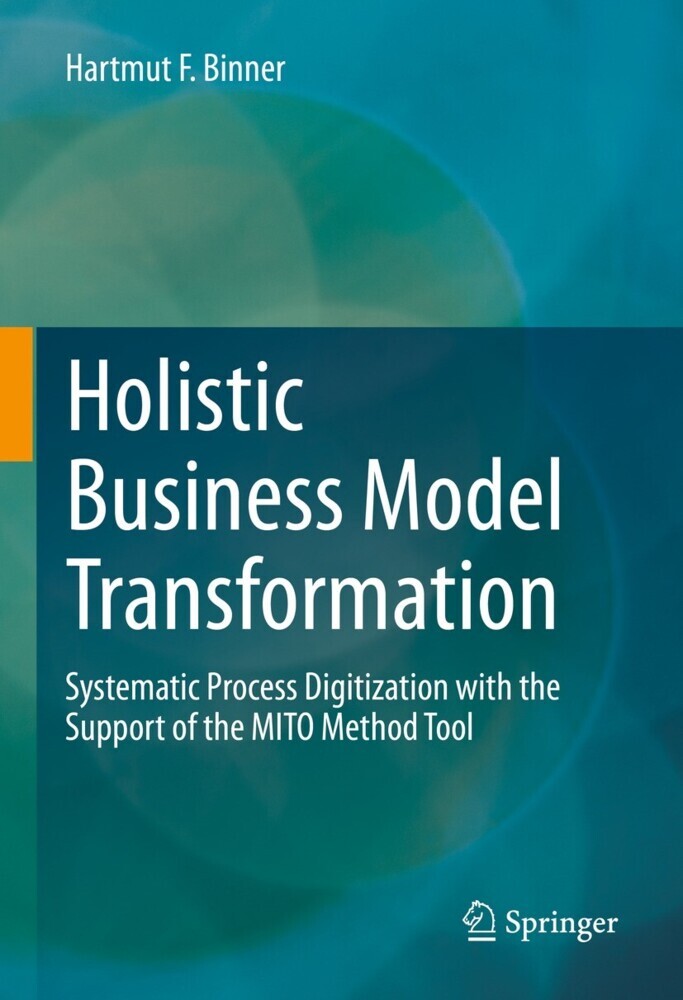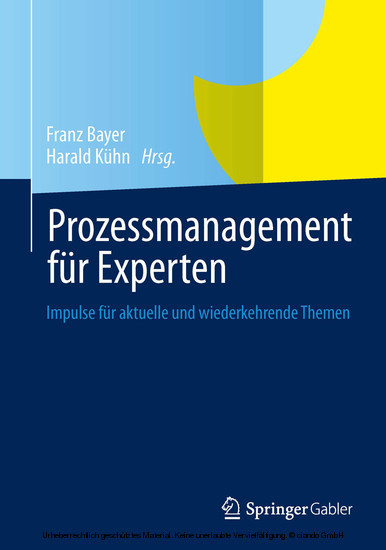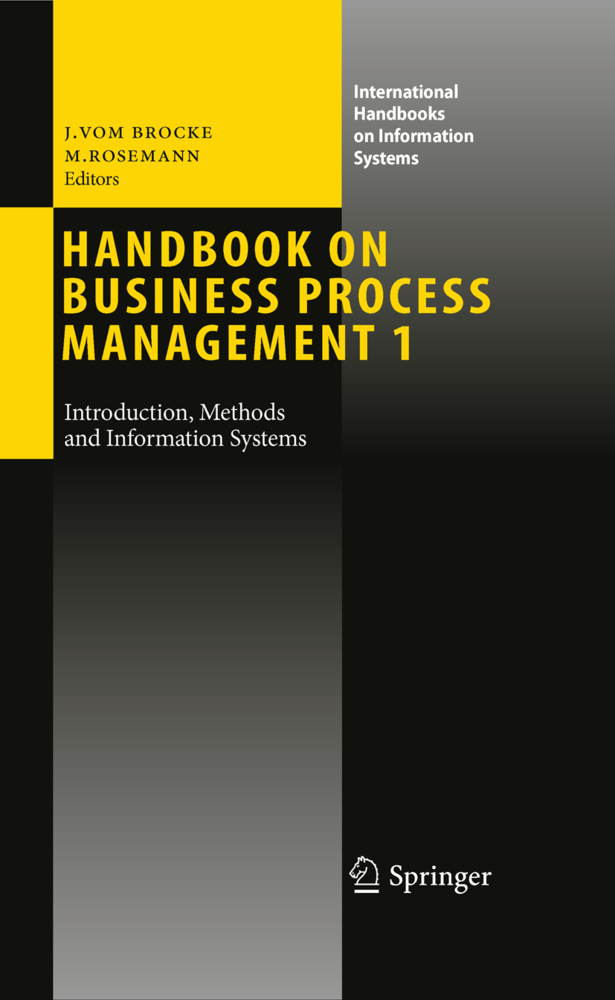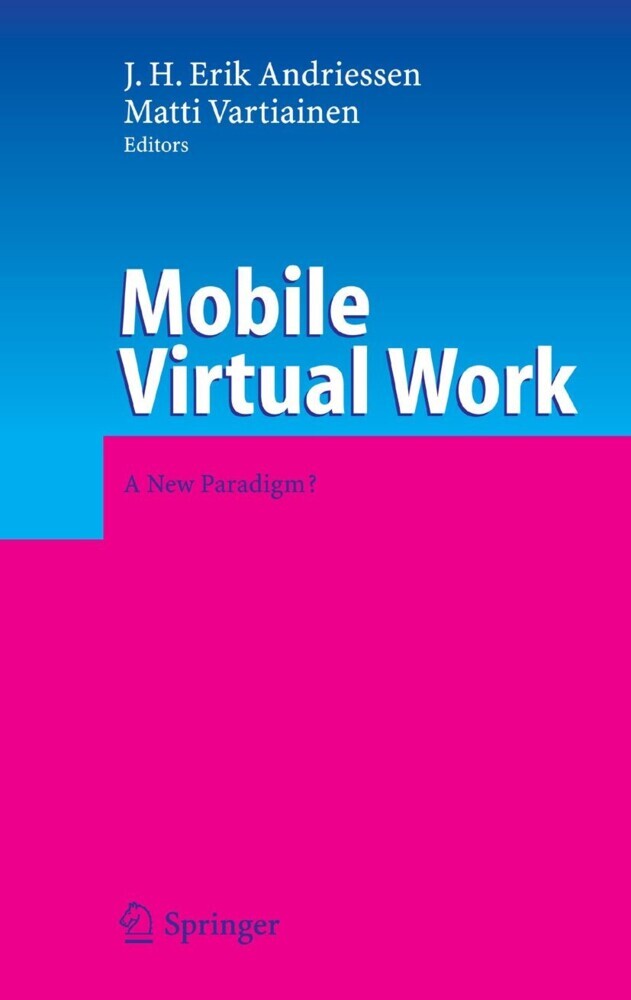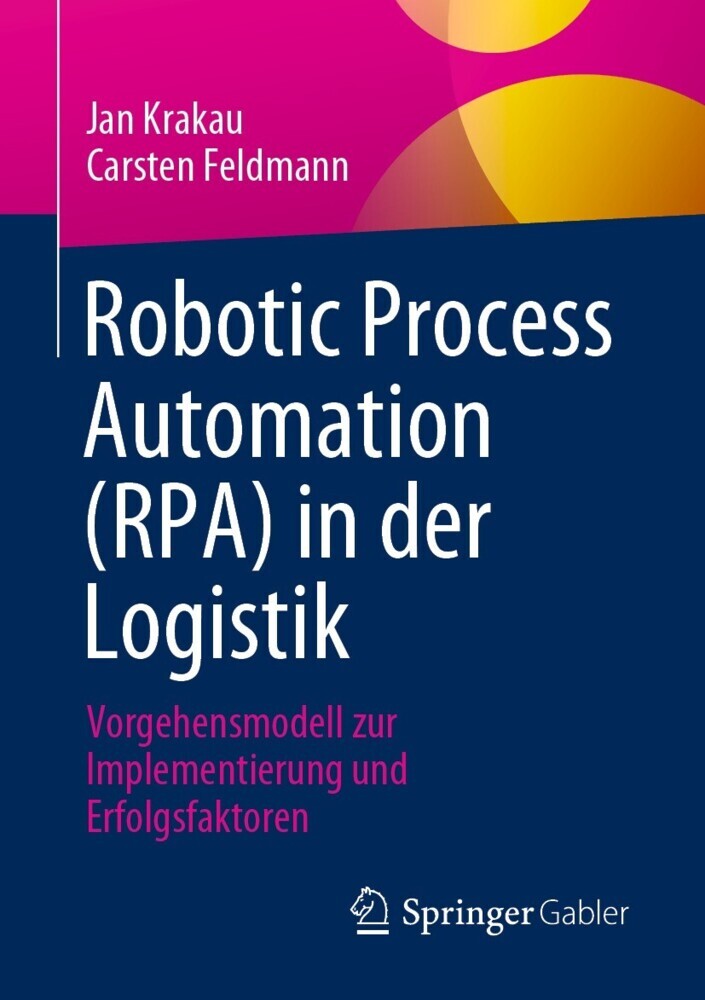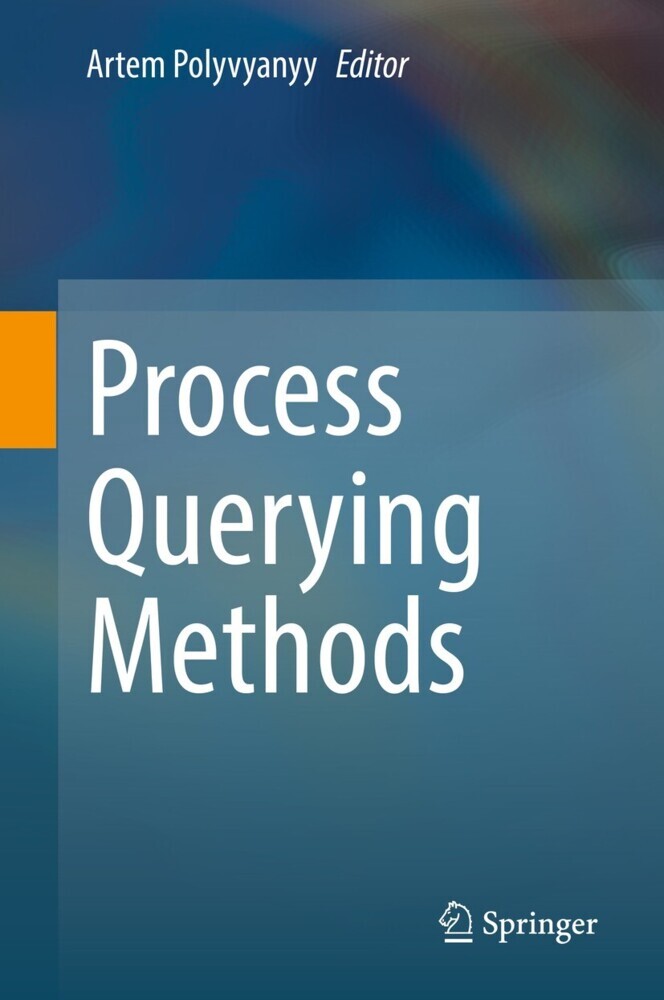Handbook on Business Process Management 2
Strategic Alignment, Governance, People and Culture
Handbook on Business Process Management 2
Strategic Alignment, Governance, People and Culture
Business Process Management (BPM) has become one of the most widely used approaches for the design of modern organizational and information systems. The conscious treatment of business processes as significant corporate assets has facilitated substantial improvements in organizational performance but is also used to ensure the conformance of corporate activities. This Handbook presents in two volumes the contemporary body of knowledge as articulated by the world's leading BPM thought leaders. This second volume focuses on the managerial and organizational challenges of Business Process Management such as strategic and cultural alignment, governance and the education of BPM stakeholders. As such, this book provides concepts and methodologies for the integration of BPM. Each chapter has been contributed by leading international experts. Selected case studies complement their views and lead to a summary of BPM expertise that is unique in its coverage of the most critical success factors of BPM.
1;Foreword;82;How to Read this Handbook;123;Contents;144;Contributors;185;Part I;225.1;Strategic Alignment;225.2;Delivering Business Strategy Through Process Management;255.2.1;1 Introduction;225.2.2;2 Lost in Translation;265.2.2.1;2.1 Today´s Reality;265.2.2.2;2.2 The Outside-in Perspective: The One that Counts;275.2.2.3;2.3 Methodology Implications;285.2.3;3 An Integrative Model from Drivers Through Aligned Capability;305.2.3.1;3.1 Validate Strategic Direction (Methodology 1.1);325.2.3.1.1;3.1.1 Purpose of the Activity;325.2.3.1.2;3.1.2 Strategic Concepts;325.2.3.1.3;3.1.3 Scope of the Strategic Models;345.2.3.1.4;3.1.4 External Assessments;345.2.3.1.5;3.1.5 Strategic Analysis of External Assessments;355.2.3.1.5.1;Business Scenario Analysis;355.2.3.1.5.2;Value Proposition;355.2.3.1.5.3;Balanced Scorecard;365.2.3.1.6;3.1.6 Documenting the Strategic Intent;365.2.3.2;3.2 Determine Stakeholder Relationships (Methodology 1.2);375.2.3.2.1;3.2.1 Purpose of the Activity;375.2.3.2.2;3.2.2 The Stakeholder Business Context;385.2.3.2.3;3.2.3 Stakeholder Relationship Analysis;395.2.3.2.4;3.2.4 Stakeholder Expectations and Goals;395.2.3.2.5;3.2.5 Measurement of Relationship Performance;405.2.3.2.6;3.2.6 Critical Success Factors (CSFs) and Required Capability for Relationship Success;405.2.3.3;3.3 Consolidate Strategic Criteria (Methodology 1.3);415.2.3.3.1;3.3.1 Purpose of the Activity;415.2.3.4;3.4 Architect Business Processes (Methodology 2.1);415.2.3.4.1;3.4.1 Purpose of the Activity;415.2.3.4.2;3.4.2 Lifecycle Approach to Building the Architecture;435.2.3.4.3;3.4.3 Reference Frameworks Approach to Building the Architecture;445.2.3.4.3.1;Generic Enterprise Models;445.2.3.4.3.2;Industry-Specific Models;455.2.3.4.3.3;Domain-Specific Models;455.2.3.4.3.4;Process, Lifecycle, and Value Chain Models;455.2.3.4.4;3.4.4 Architecture Consolidation;465.2.3.5;3.5 Identify Measures of Performance (Methodology 2.2);465.2.3.5.1;3.5.1 Purpose of the Activity;465.2.3.5.1.1;Top Down and Horizontal Perspectives;475.2.3.6;3.6 Align Process Governance (Methodology 2.3);485.2.3.6.1;3.6.1 Purpose of the Activity;485.2.3.6.2;3.6.2 Motivation Alignment and Stewardship Support;515.2.3.7;3.7 Prioritize Processes (Methodology 2.4);515.2.3.7.1;3.7.1 Purpose of the Activity;515.2.3.7.2;3.7.2 Matrix Alignment Approach;525.2.3.7.2.1;The Process/Stakeholder Value Matrix;525.2.3.7.2.2;The Process/Stakeholder Performance Gap Matrix;525.2.3.7.2.3;Pain and Gain;535.2.3.8;3.8 Align Process Capabilities (Methodology 2.5);545.2.3.8.1;3.8.1 Purpose of the Activity;545.2.3.9;3.9 Establish Enterprise Transformation Portfolio (Methodology 2.6);555.2.3.9.1;3.9.1 Purpose of the Activity;555.2.4;4 Conclusion;555.2.5;References;565.3;Management of Process Excellence;585.3.1;1 Management of Process Excellence (MPE) Requirements and Approach;585.3.2;2 Innovation: Key Target of MPE;635.3.3;3 Information Technology Enabling the Execution of MPE;665.3.4;4 Business Process Governance for MPE;705.3.5;References;745.4;Process Capital as Strategic Success Factor:The Lufthansa Example;765.4.1;1 Processes as Intangible Assets (``Process Capital´´);765.4.2;2 The Correlation Between Strategy and Process Capital;795.4.2.1;2.1 Overview;795.4.2.2;2.2 Core Competencies in Process Capital;805.4.2.3;2.3 Strategy Implementation Using Process Capital;815.4.3;3 Process Capital Management;835.4.3.1;3.1 Overview;835.4.3.2;3.2 Anchoring Process Capitals in the Strategy;845.4.3.3;3.3 Building up Process Capital;855.4.3.4;3.4 Managing Process Capital;865.4.4;4 Case Study: Lufthansa AG;875.4.4.1;4.1 Example of Lufthansa´s Process Capital;875.4.4.2;4.2 Strategy Implementation at Lufthansa Based on Process Capital;885.4.4.2.1;4.2.1 Passenger Handling;895.4.4.2.2;4.2.2 In-Flight Service;895.4.4.2.3;4.2.3 Operations;895.4.5;5 Summary and Outlook;905.4.6;References;905.5;Process Classification Frameworks;925.5.1;1 Introduction;925
Vom Brocke, Jan
Rosemann, Michael
| ISBN | 9783642019821 |
|---|---|
| Artikelnummer | 9783642019821 |
| Medientyp | E-Book - PDF |
| Copyrightjahr | 2010 |
| Verlag | Springer-Verlag |
| Umfang | 616 Seiten |
| Sprache | Englisch |
| Kopierschutz | Adobe DRM |

